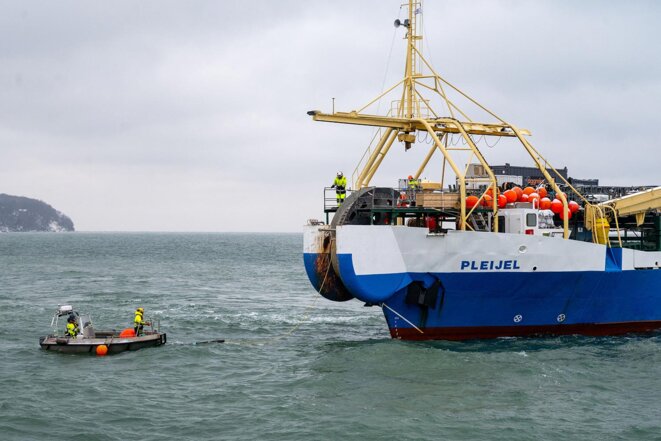A severe fuel shortage has compelled the Iranian government to shut down three major thermal power plants and impose electricity rationing affecting both residential and industrial consumers.
A government directive mandates daily electricity cuts of at least two to three hours in numerous regions and provinces. President Masoud Pezeshkian’s administration has attributed the shutdown of three power plants—in Isfahan, Arak, and Karaj—to an acute natural gas shortage and pollution concerns from burning mazut (fuel oil) as a substitute. However, Ministry of Energy data reveals that the primary cause is a shortage of all fuel types, including mazut, diesel, and natural gas.
Thermal power plants in Iran account for 95% of the country’s electricity generation and require a daily supply of 280 million cubic meters of gas or an equivalent of 225 million liters of mazut and diesel.
Until two years ago, Iran experienced gas shortages primarily in winter, but now it faces an increasing gas deficit in all seasons. In spring and summer of this year, gas accounted for 86% of the fuel used in power plants, a decrease from 94% during the same period last year.
Ministry of Energy data shows that despite earlier increases this year of 50% in mazut supply and 26% in diesel supply to power plants, liquid fuel reserves dropped to 42% by early autumn. This decline is due to a 100% surge in mazut consumption and an 80% rise in diesel use at power plants since the start of the Iranian calendar year on March 21.
Iranian mazut contains 3.5% sulfur, seven times the international standard for marine fuel. The quality and sulfur content of diesel in Iran also exceed Euro 4 standards.
The Iranian Parliament Research Center reports that Iran faced a daily gas shortage of 150 million cubic meters during the spring and summer, a figure that could rise to 300 million cubic meters per day this winter.
Iran holds the world’s second-largest gas reserves after Russia and ranks as the fourth-largest producer. However, the lack of renewable energy development, extensive energy waste, particularly in gas, and the low efficiency of power plants have led the country into a gas deficit.
Meanwhile, data from BP shows that while Iran’s annual gas production growth exceeded 5% over the past decade, it has slowed to 2% in the past three years. Last year, Iran produced about 260 billion cubic meters of gas, with 12 billion cubic meters exported to Turkey and Iraq.
Iran’s mazut situation
Reports from tanker tracking companies also indicate a sharp decline in Iran's mazut exports, highlighting the surge in domestic consumption of this highly polluting fuel.
Until a few years ago, Iran was exporting an average of 400,000 barrels of mazut daily. However, this figure dropped to 220,000 barrels last year.

The main customers for Iranian mazut are China and the UAE. Calculations by Iran International, citing data from Vortexa, Kpler, and the United Against Nuclear Iran(UANI), an advocacy group, indicate that during the first 10 months of this year, Iran exported an average of 70,000 barrels of mazut daily to China and 60,000 barrels to the UAE.
In other words, Iran's mazut exports have halved compared to last year and dropped to a third of their level in 2021. Data from the Ministry of Energy shows that Iran consumed 8 billion liters of mazut in power plants last year, in addition to double this amount of diesel in power generation sector.
Iran's gas exports
Data from BP reveals that Iran exported 12 billion cubic meters of gas to Turkey and Iraq last year, consistent with official data from both Turkey and Iran. While no report on Iran’s total gas exports for the current year is yet available, official data from Turkey indicates that it imported 4.2 billion cubic meters of gas from Iran in the first eight months of this year—an increase of 10.5% compared to the same period last year.

In its budget draft for the coming year, the Iranian government has forecasted gas exports of 16 billion cubic meters, valued at $5.2 billion. If Iran were to consume this amount of gas domestically in power plants instead of exporting it, it would reduce the need for 16 billion liters of mazut and diesel—equivalent to approximately $8 billion in international market value.
In simple terms, redirecting exportable gas to domestic power plants could reduce pollution and save Iran an additional $3 billion. However, Iran continues to prioritize gas exports, likely to sustain Iraq and Turkey's dependency or to secure its export markets. Recently, Iran also filed a lawsuit against Pakistan in the International Court of Justice over delayed gas imports.
According to an existing contract, Pakistan was to begin purchasing 7 billion cubic meters of Iranian gas annually starting in 2015. However, it claims that concerns over U.S. sanctions have prevented it from moving forward with the imports.

 1 week ago
3
1 week ago
3


